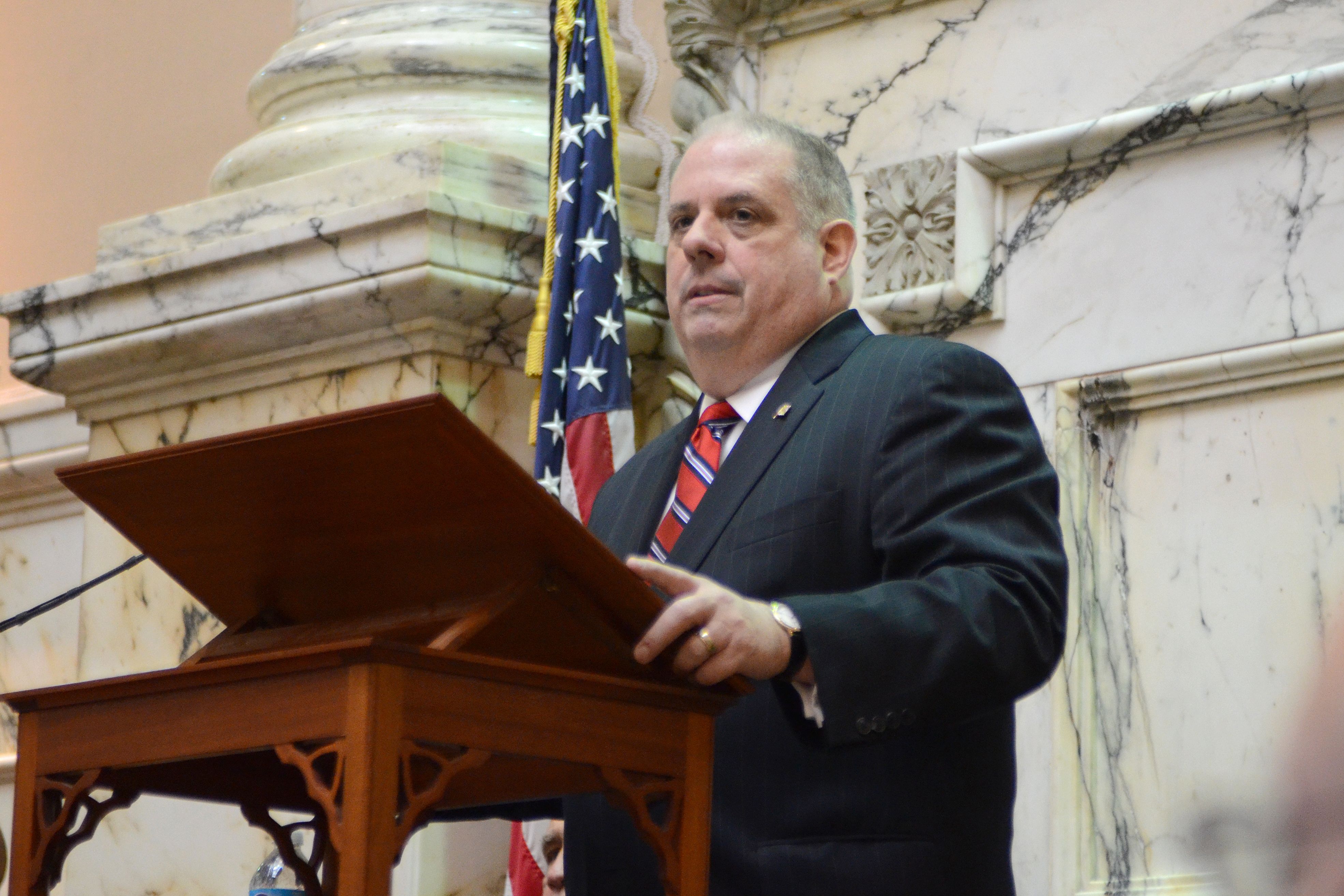The budget Gov. Larry Hogan proposed to the Maryland General Assembly on Friday bolsters funding for the University System of Maryland and grants raises to all state employees, even as his administration remains in a caustic back-and-forth with the union representing workers at this university.
Of the $46.6 billion in Hogan’s proposed budget, he allocated a record $1.45 billion to the University System of Maryland, representing a 4.2 percent increase from last year. The budget limits tuition growth to 2 percent, in line with previous years. Hogan also set aside funds for 3 percent raises for state employees.
While Hogan reached deals with the four other unions that represent public employees, his office and the American Federation of State, County and Municipal Employees Council 3 — which represents more than 28,000 state workers — failed to get negotiations up and running.
[Read more: Supreme Court to hear case on constitutionality of Maryland’s 6th congressional district]
At a press conference Thursday, Hogan said AFSCME Council 3 “refused to even come to the table, choosing instead to simply play divisive political games at the expense of hard-working Maryland state employees.”
But three days earlier, the union’s president, Patrick Moran, said talks had failed because Hogan’s administration was unwilling to compromise, insisting that leaders limit their communications about negotiations with union members, the press and legislators.
Moran told The Diamondback on Saturday that Hogan had also refused to grant more than 3 percent salary increases, even though he said this amount did not keep up with inflation. Union leaders had wanted to see funding allocated for 5 percent raises along with additional increases each year. But Moran said Hogan had refused to bargain since day one.
“Even in an incredibly healthy fiscal [year], the state still chooses to shortchange the employees,” he said. “The fact of the matter is, since [Hogan] took office in 2015, he has shortchanged employees and subjected them to abuse on the job and poor resources.”
Over the past few months, both AFSCME and Hogan have filed unfair labor practice complaints with the State Labor Relations Board — the union in October, and the governor in December. As of Saturday, no hearing had been scheduled, Moran said.
[Read more: UMD is enrolling more out-of-state students — and hiking their tuition]
The 3 percent raise Hogan proposed in his budget comes in the wake of a $504 million surplus from the 2018 fiscal year. Depending on leftover revenue, Hogan said state employees could get even more.
“I do not want to punish hardworking state workers because of the failures of these paid political operatives,” Hogan said.
This raise is in addition to the 2 percent cost of living adjustment Hogan approved for state workers last year, which took effect Jan. 1. At the time, Hogan also promised the employees half-percent merit increases and $500 bonuses on April 1, 2019 if the surplus from that fiscal year was at least $75 million.
But since the surplus well exceeded this amount, Moran said there’s no reason the government should not raise employee wages. In October and again earlier this month, workers from this university gathered in Annapolis with other AFSCME Council 3 union members to demand that more money from this surplus be set aside for wages and staffing increases.
“Governor Hogan doesn’t care,” Moran said. “He made that very clear.”
The 2 percent proposed tuition increase — which would apply to in-state students — is the same as the previous three fiscal years. For the fall 2018 semester, full-time in-state undergraduates at this university paid $4,325.50.
In a statement, University System of Maryland chancellor Robert Caret praised Hogan’s proposed budget for its limited tuition increase, which he said has allowed for many students in the system to graduate without debt. He also said the system “strongly supports” the proposed 3 percent raise for state employees.
“I want to thank Governor Hogan, the General Assembly and elected officials across Maryland for recognizing the importance of higher education in the information age and for their long-standing and steadfast financial support for our universities, students and innovators,” Caret said in the statement.



